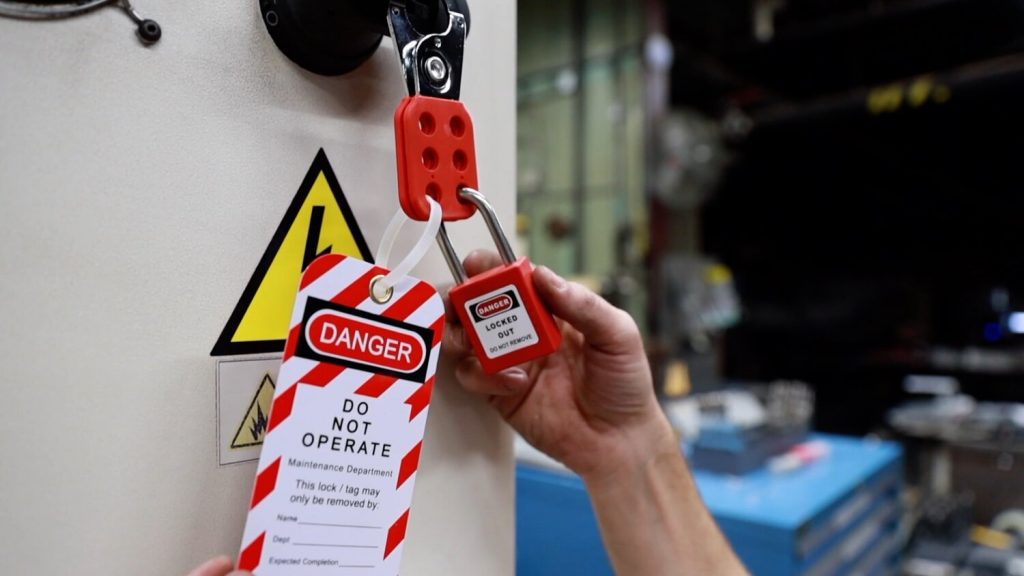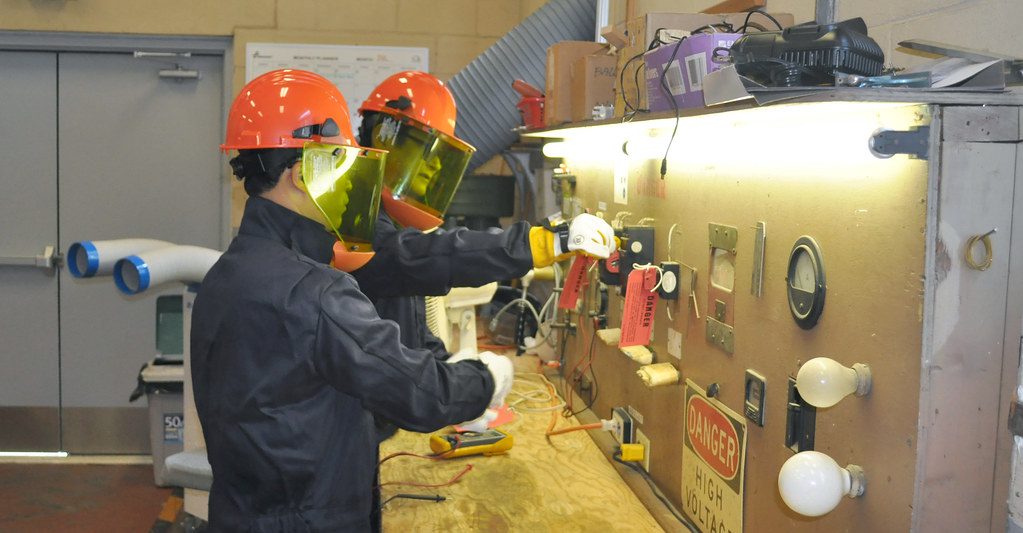If you have ever pulled your car into a garage for an oil change, the first thing the technician asks you to do is take your keys out of the ignition and put them on the dashboard. It isn’t enough to make sure the car isn’t running—before someone puts their hands near the oil pan, they need to be certain there is zero chance the engine will come roaring to life. In rendering the car inoperable, they are protecting themselves—and you, too—by taking the possibility for human error out of the equation. The same principle applies when it comes to machinery on the work site. This is why we have Lockout Tagout procedures in place.

So what exactly is a Lockout Tagout procedure?
Lockout/tagout (LOTO) is a set of procedures that are used to ensure that equipment is shut down, inoperable, and (where relevant) de-energized. This allows maintenance and repair work on the system to be performed safely. Any workplace scenario involving equipment that could lead to the inadvertent release of hazardous energy requires the use of lockout/tagout procedures. In this context, “hazardous energy” includes not only electricity but other forms of energy such as pneumatic pressure, hydraulic pressure, and gas. The purpose of LOTO procedures is both to prevent direct exposure to this energy, as well as to prevent harm caused by any machinery or objects that could be moved by that energy (e.g., a pneumatic press accidentally being activated).
In practice, lockout is the isolation of energy from the system (a machine, equipment, or process) which physically locks the system in a safe mode. The energy-isolating device can be a manually operated disconnect switch, a circuit breaker, a line valve, or a block. Push buttons, selection switches and other circuit control switches are not considered energy-isolating devices. In most cases, these devices will have loops or tabs which can be locked to a stationary item in a safe position (de-energized position). The locking device (or lockout device) can be any device that has the ability to secure the energy-isolating device in a safe position.

Why is LOTO important?
The use of lockout/tagout procedures is considered a critical aspect of workplace safety in any occupational setting in which workers come into direct contact with machinery or workplace equipment. Accidents which can be prevented by LOTO procedures include:
- Electrical accidents
- Crushing
- Lacerations
- Fires and explosions
- Chemical exposure
Safety devices such as barrier guards or guarding devices are installed on systems to maintain worker safety while these systems are being operated. When activities such as maintenance, repair, or set-up; or the removal of jams, clogs or misaligned feeds are performed, these safety devices may be removed if there are other controls in place to reduce or eliminate the hazards. Having a lockout/tag out program and procedures for these scenarios will reduce the risk of injury due to the unintended or inadvertent release of hazardous energy.
